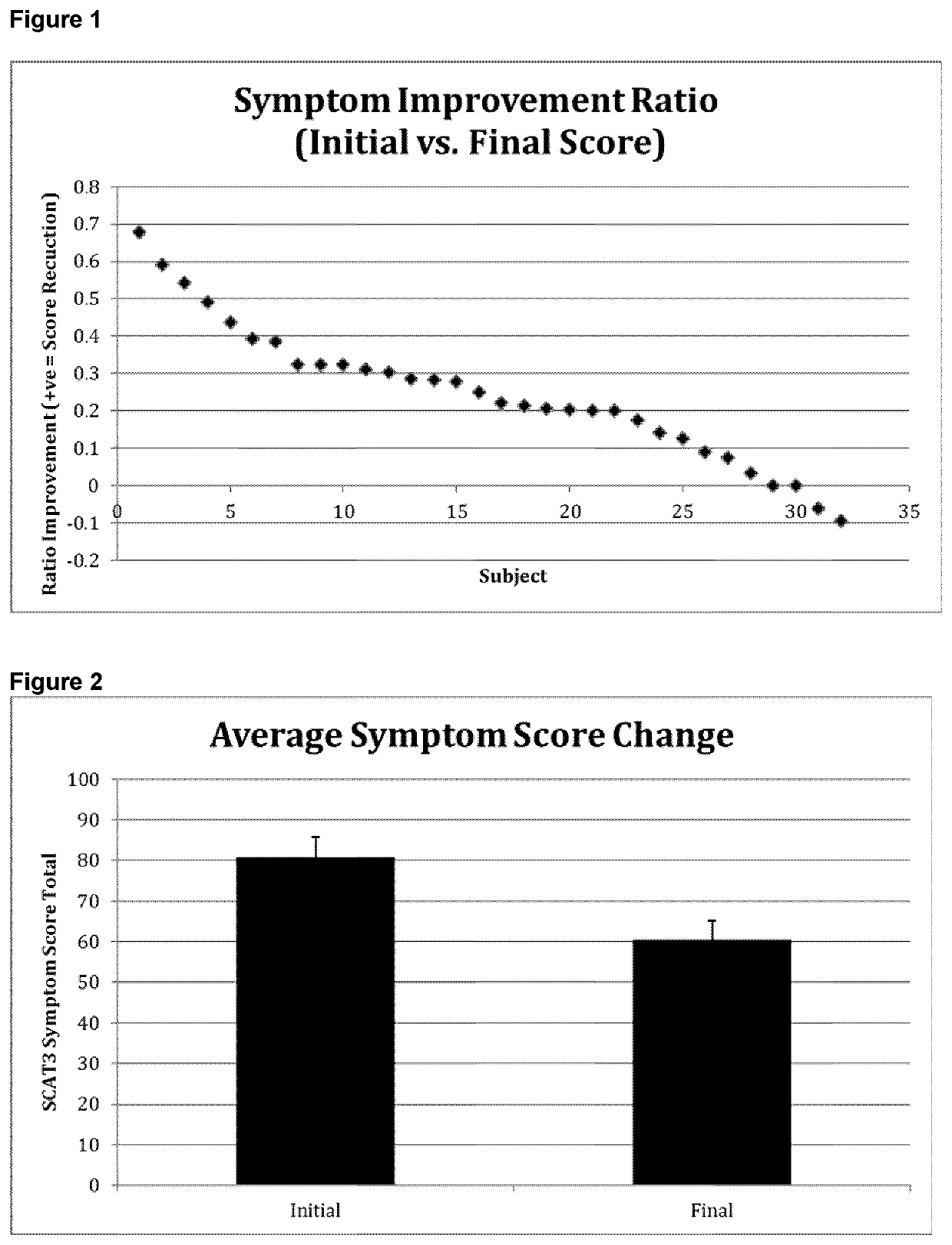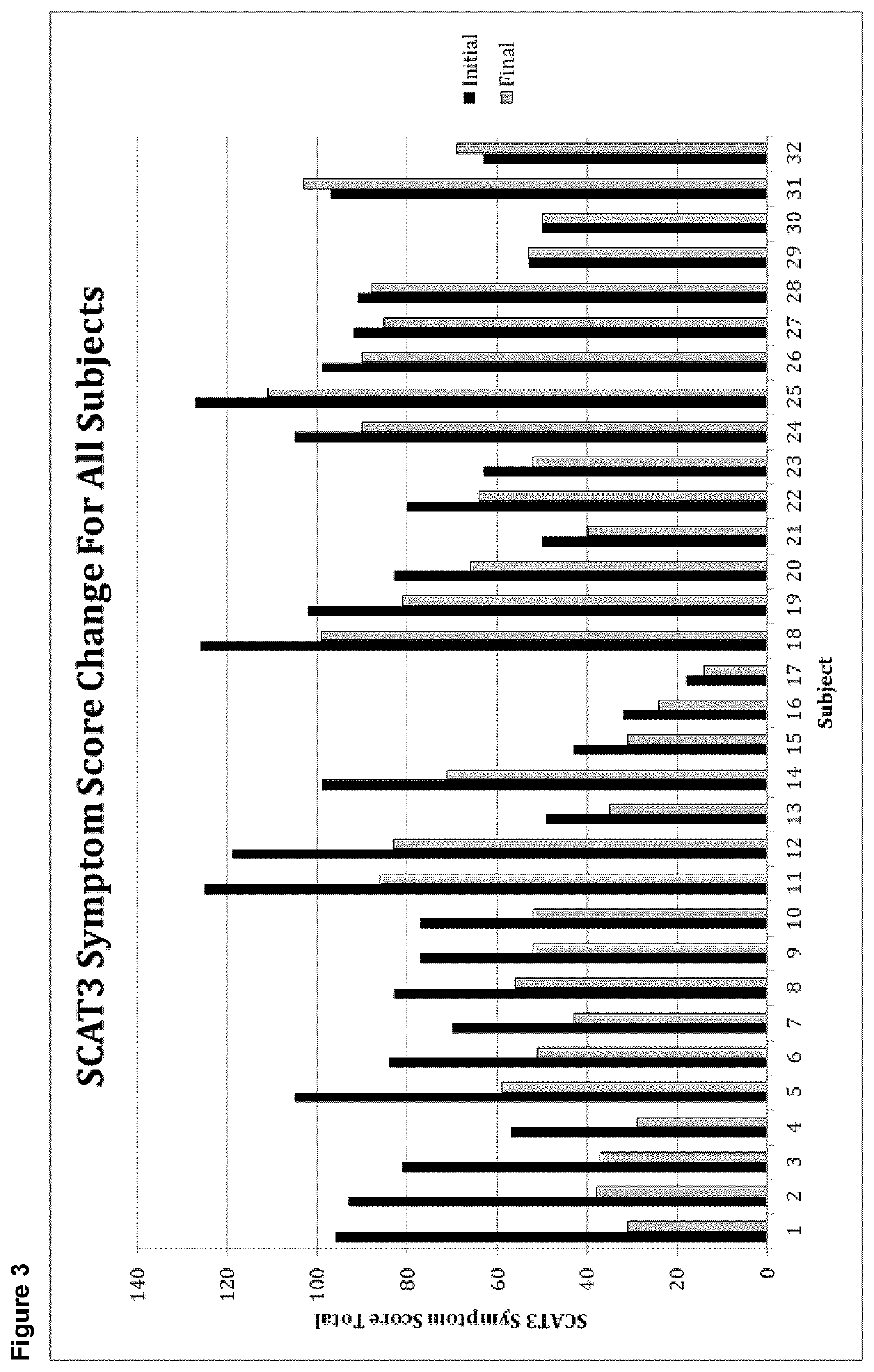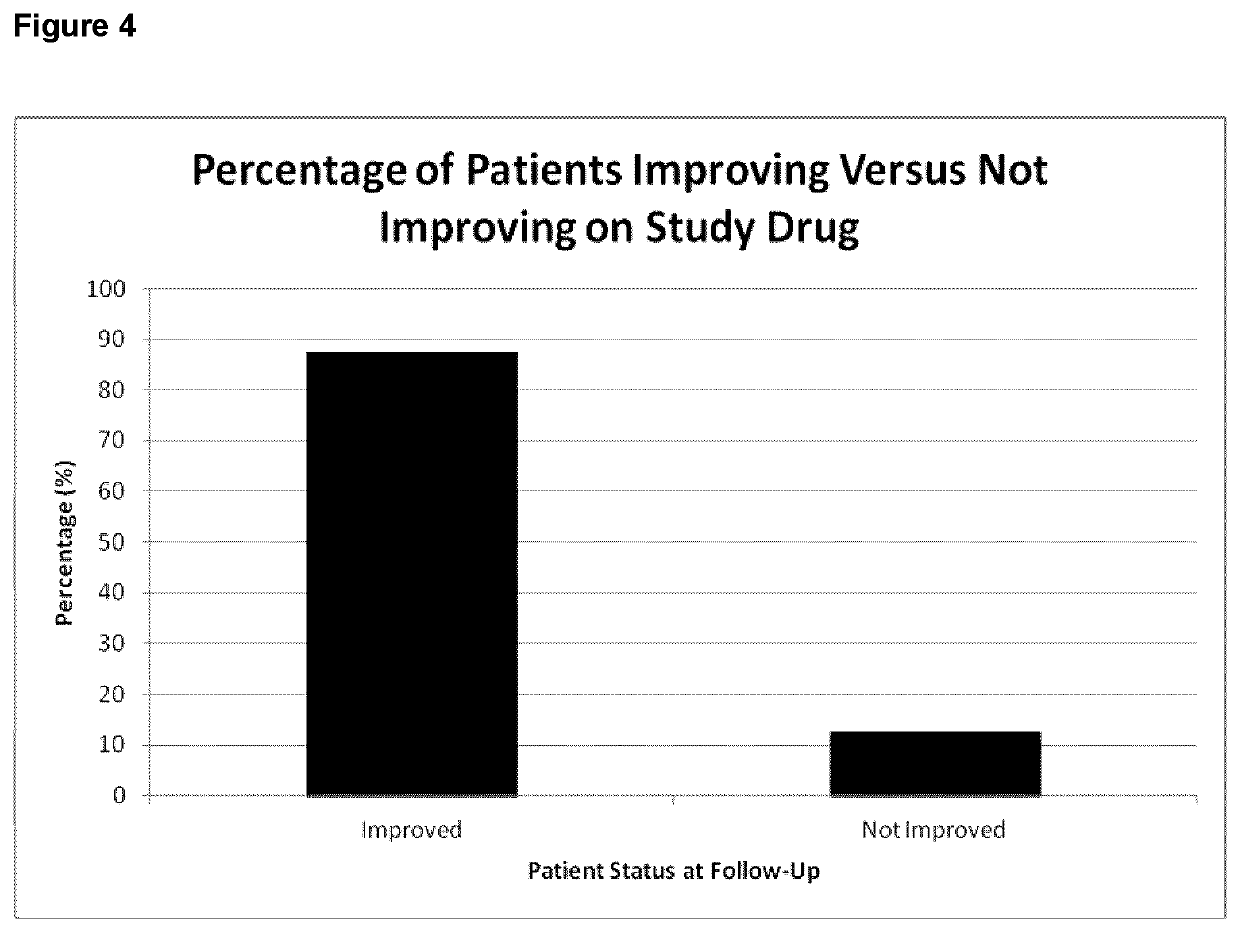Cannabinoid-Containing Fatty Acid Formulations for Treating Disorders of the Nervous System
- Summary
- Abstract
- Description
- Claims
- Application Information
AI Technical Summary
Benefits of technology
Problems solved by technology
Method used
Image
Examples
example 1
- vs. Post-Treatment Study
[0060]This Example compares the SCAT3 symptom scores of 32 patient-subjects (16 male, 16 female) with PCS greater than 3 months in duration before and after treatment with a cannabinoid containing plant extract from a CBD dominant strain of Cannabis sativa in solution with MCT oil. The subjects were taken from a convenience sample of patients seeing a neurosurgeon for management of post-concussive syndrome. The ratio of THC:CBD was approximately 16:1. The CBD content was approximately 12.8 mg / mL and the THC content was approximately 0.8 mg / mL. Patients were instructed to take 1.5 mL of the Cannabis oil twice per day, once in the morning and once in the early afternoon. Patient were accordingly treated so as to provide a daily dosage of CBD of approximately 38.4 mg, and a daily dosage of THC of approximately 2.4 mg. These patients were also treated with 1-3 g DHA per day.
[0061]Prior to starting the treatment protocol, subjects were counseled in-person at the...
example 2
rts from Example 1
[0063]Subject 6 is a 46-year-old right-handed male who sustained a concussion following a motor vehicle accident over two years ago and had progressed into a post-concussive syndrome. He experienced the entire constellation of post-concussive symptoms (physical, cognitive, emotional, and sleep-related symptoms) and was struggling with significant anxiety and speech difficulties following the injury. He had difficulty carrying out a normal conversation and would constantly stutter his speech. He had significant difficulty being in a social environment due to his anxiety and avoided social interactions when possible. He also took a significant amount of prescription medication to control his symptoms, including Percocet and Trazodone. His initial SCAT3 symptom score was 84. After taking the Cannabis oil formulation described in Example 1, his symptom score decreased to 51. His wife noticed almost immediate improvement in all areas, in particular his speech and anxiet...
example 3
Trial
[0065]A Phase 2 a pilot study was designed as a retrospective case series with subjects (n=100) receiving the formulation of Example 1, and qualifying for the study based on specific inclusion and exclusion criteria. The study population was made up of patients who were evaluated to have refractory post-concussion syndrome (PCS), defined by persisting complaints associated with PCS. Subjects were monitored prior to receiving and following treatment utilizing validated scales. The formulation used to treat the patients was (as in Example 1): 0.8 mg / mL THC, 12.8 mg / mL CBD (in Cannabis oil, given in a 1.5 mL dose twice per day) and 1-3 g DHA as delivery oil each day.
[0066]Patients in this study demonstrated clinically significant improvements in cognitive function, speech, headaches and additional debilitating symptoms. Results are illustrated in FIGS. 6 and 7, reflecting the percentage improvement in symptoms of 100 concussed patients on the formulation based on SCAT-3 (validated...
PUM
| Property | Measurement | Unit |
|---|---|---|
| Fraction | aaaaa | aaaaa |
| Percent by mass | aaaaa | aaaaa |
| Mass | aaaaa | aaaaa |
Abstract
Description
Claims
Application Information
 Login to View More
Login to View More - R&D
- Intellectual Property
- Life Sciences
- Materials
- Tech Scout
- Unparalleled Data Quality
- Higher Quality Content
- 60% Fewer Hallucinations
Browse by: Latest US Patents, China's latest patents, Technical Efficacy Thesaurus, Application Domain, Technology Topic, Popular Technical Reports.
© 2025 PatSnap. All rights reserved.Legal|Privacy policy|Modern Slavery Act Transparency Statement|Sitemap|About US| Contact US: help@patsnap.com



